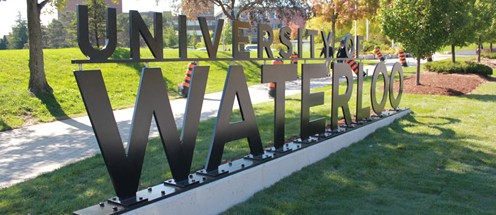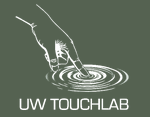IMMERSe Postdoc Day rundown, take 1
Last week, I was called over to the University of Waterloo for a kind of IMMERSe summit. The IMMERSe Postdoc Day was meant to be for the network’s outgoing postdoc (our own Rob Gallagher) and incoming postdocs (Amanda Phillips at UC Davis and Rob Teather (McMaster) to give a summary of the work either done in the past year or planned for the coming year. Planned kind of at the last minute, the event (which until I got there I thought was more of a meeting), took place at the UW campus by the university’s Games Institute. At first, I was sent there mainly to listen and maintain continuity for Concordia within the network (as our main envoy Rob is leaving at the end of summer), but a sudden emergency within Rob’s family created a shift in my role. Rob had to be in England the day of the event, so I ended up taking on his duties as Concordia IMMERSe’s main representative and gave a presentation that he had created. I’ll get to that, but first I’ll write a bit about my impressions of the games research going on at UW. (Apologies in advance to anyone whose work I’ve done a poor job of representing–I could only take notes so quickly. If you’d like me to make a revision, please don’t hesitate to email me at [email protected].)
The Postdoc Day began with a tour of several research labs where we got to hear about the kinds of projects going on at Waterloo and ask (a couple) questions. First up was the Touchlab, a space dedicated to studies of human-computer interaction and information visualization. Touchlab’s big claim to fame in the conference circuit right now is their giant tabletop shared screen, a beautiful piece of equipment for collaborative digital work and play that operates using a Kinect(!)–just incredible. However, the lab is up to much more. For example, they’re apparently the first people to be doing intensive scholarly work into turn-based vs. real-time games, working with policy makers (particularly tax people) to develop new strategies for engaging constituents. They’re also doing experiments measuring embodiment, trying to parse out the nuanced differences between using physical and virtual tools, and the kind of kinefigural after-effects that hamper or boost embodiment. In addition, the lab is performing research into the relationship between casual games and commerce, looking at issues of self-control and addiction. It’s not hard to believe that low self-control is linked to higher spending in mobile games like Candy Crush, but the Touchlab has done experiments and interviews to dig into the psychological aspects at play, to find out what people are actually thinking and how they’re processing the world when they make in-game purchases. This research has the potential to change games–it may help unlock the methods of how to make games that better accommodate those with low self-control. Finally, the most memorable presentation for me was on collaborative play design–John Harris is trying to make a game that allows different people with different play styles to still game together with his project Beam Me Up, Scotty, where one person plays an action-oriented game on the ground while the other overlooks the battlefield and coordinates transportation and supply drops.
After the Touchlab, we were ushered across campus and through a series of tunnels to the Gambling Research Lab, headed up by Drs. Kevin Harrigan and Michael Dixon (or at least they were the two senior people who showed us around). This lab has been in operation for over half a decade, and does extensive research into multiple forms of gambling and their connections to addiction. The space was crammed with slot machines, and Kevin and Michael gave us a close look and a detailed breakdown of how slot machines operate and the kinds of behaviour they encourage. Their hypothesis revolves around losses disguised as wins (LDWs) that offer players an illusion of control and minimize the psychological perception of loss. Experiments taking physiological measurements of players (both casual gamblers and problem gamblers) back this hypothesis up, and the Gambling Research Lab is trying to use their findings to influence policy to make gambling more fair to players. An uphill battle to be sure, but the research–even the little bit of it I got to see–is extremely compelling.
Overall, game studies at UW is performing incredible research quite unlike anything going on at Concordia or TAG. Much of the work seems to involve physiological research into perception and experience, rather than our more humanities-based approach where we tend to think about the political and theoretical implications and possibilities of procedural rhetoric, gaming culture, and reported player experience. The work being done seems scientifically rigorous, focused, and fascinating. In my next weeknote, I’ll go over the IMMERSe-focused afternoon presentations and elaborate somewhat on what I think Concordia’s place within the network is.




